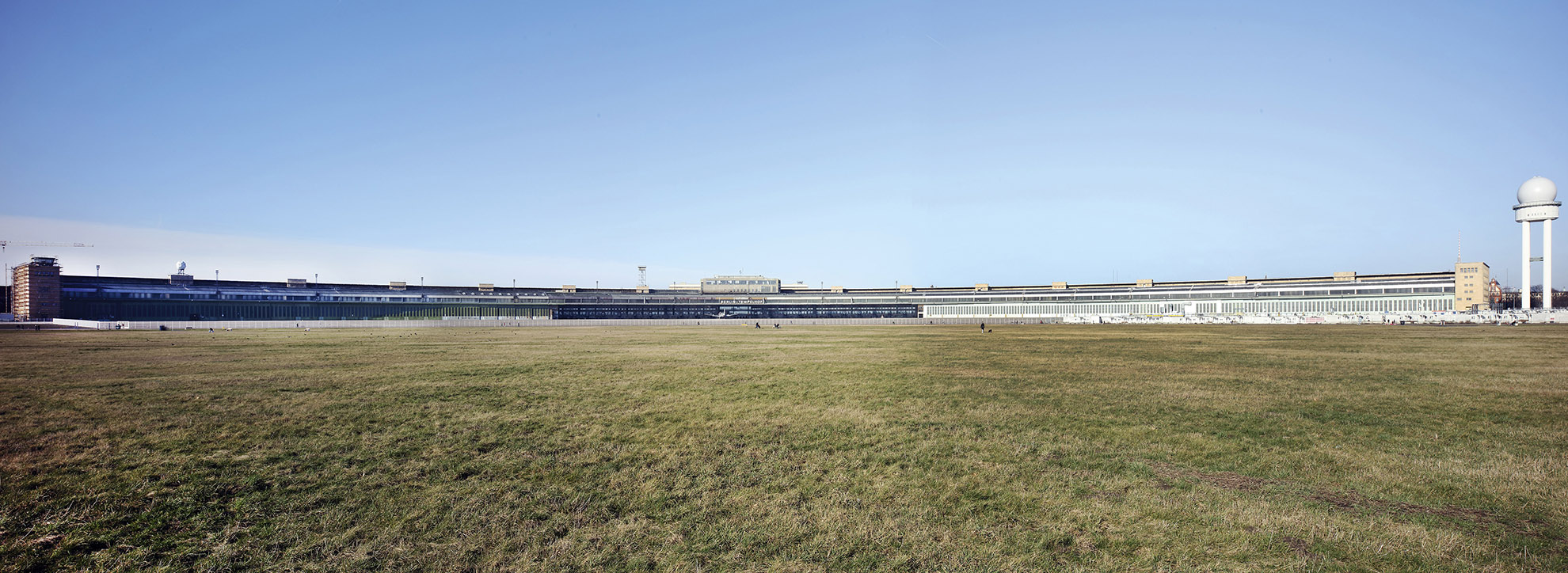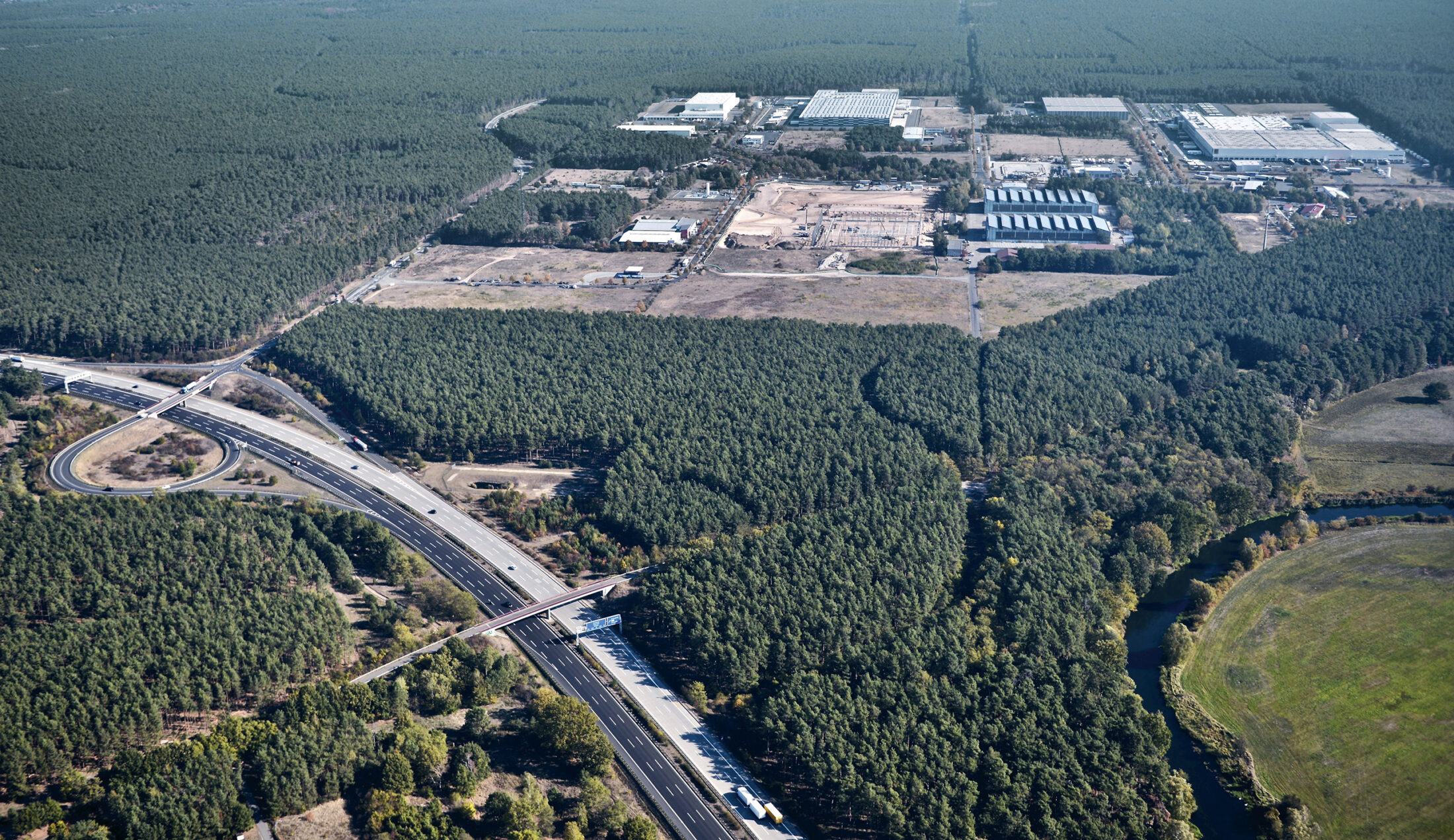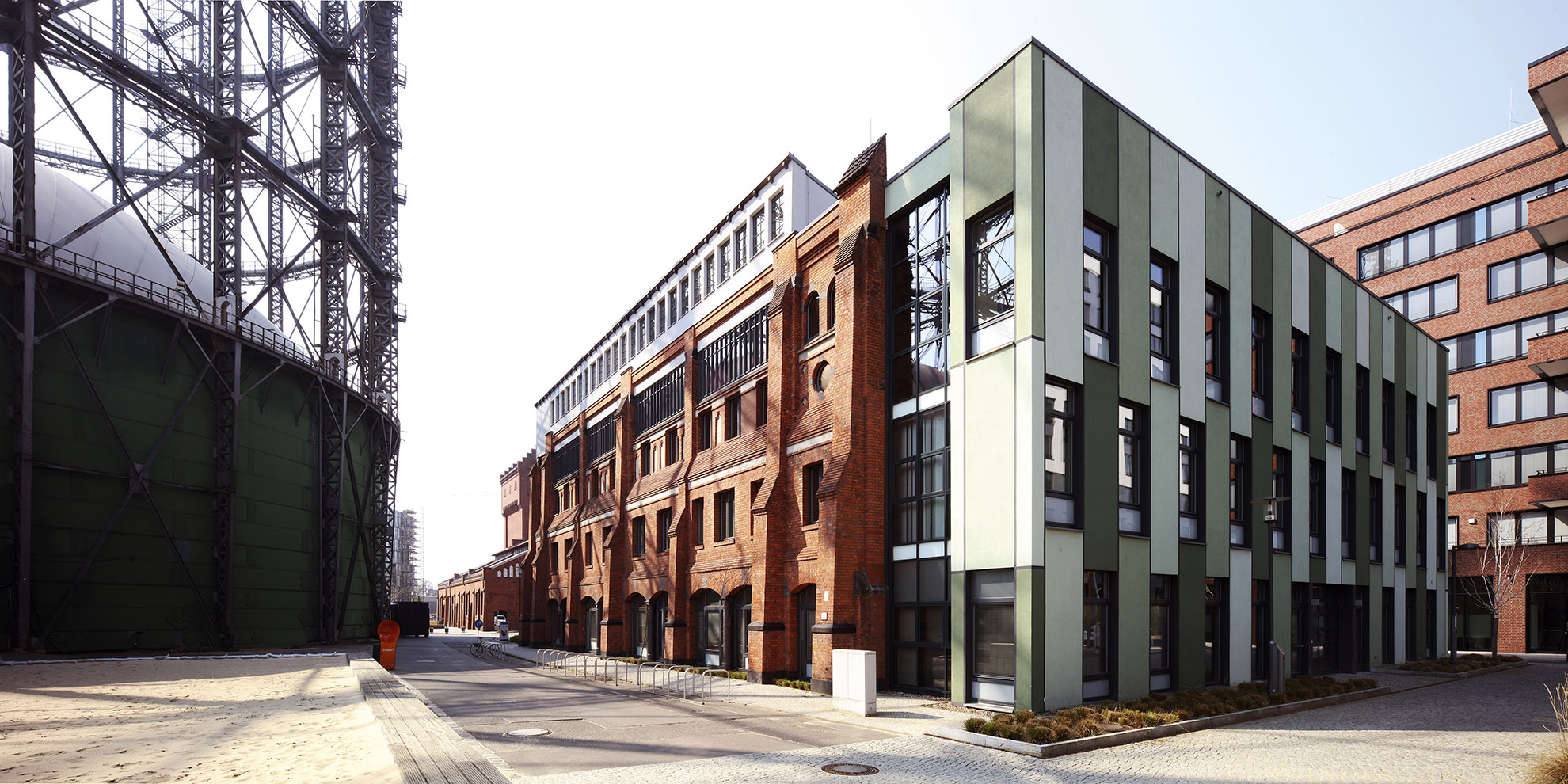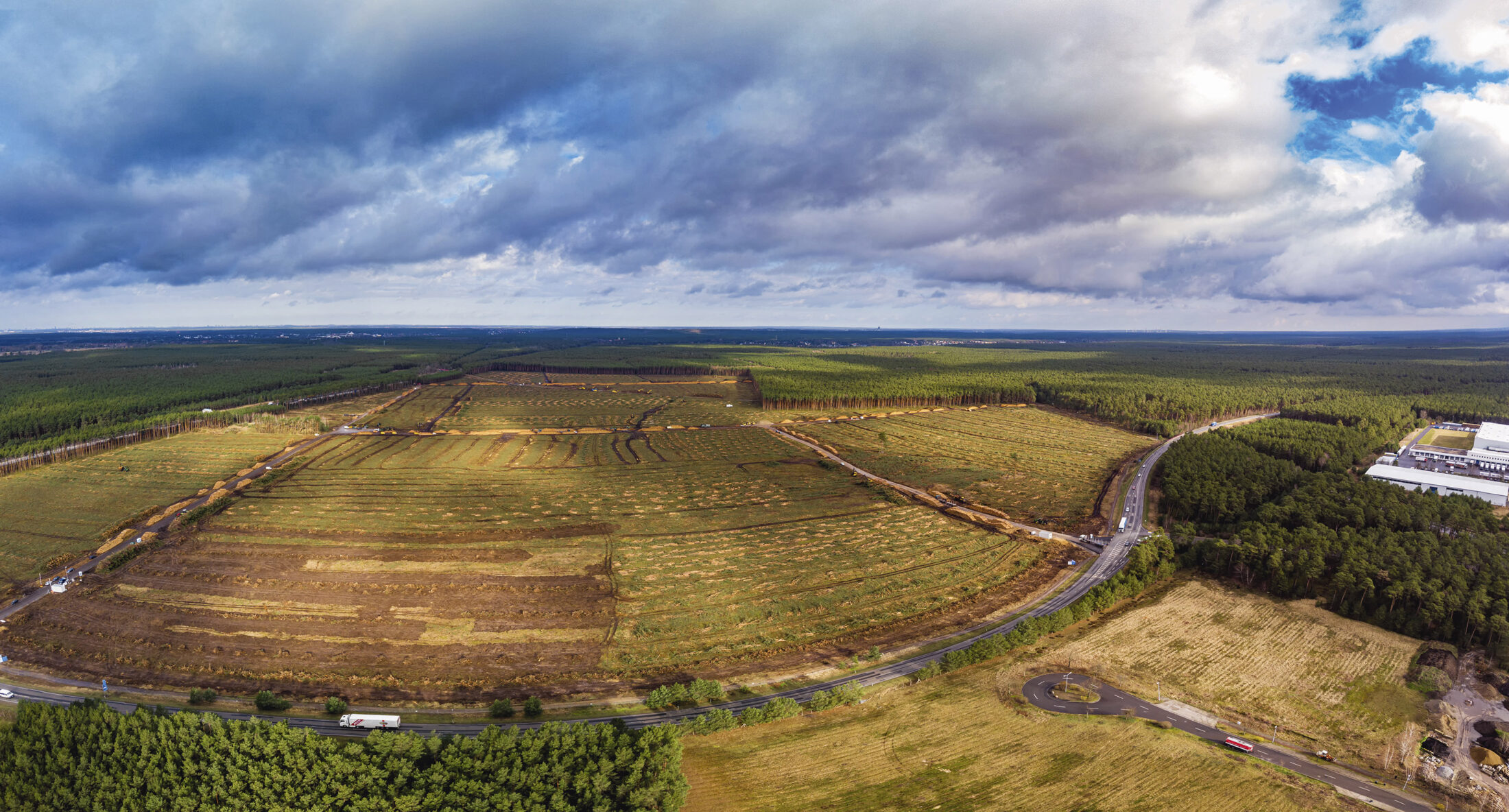A Selection of Major Projects
Big plans signify desired goals, but it is large projects that directly shape the urban space of major cities. Large projects in Berlin initially focused on industrial facilities, ports, military training areas, centres of science and hospital facilities, and later also included enormous power plants, airports, exhibition grounds and a film city just beyond the borders of Berlin. All of these large projects either promoted or hindered the development of their environment. They are special zones that are usually not accessible to the public or are only accessible to a very limited extent. As a result, they are often invisible, even on plans, just like military areas. The city’s centres of activity are now beginning to shift as the current system of airports is reorganised. New industrial centres are emerging in Siemensstadt and Grünheide. Former military zones are being turned into residential areas. Freight centres in the city’s surrounding area reflect the spatial consequences of the digital age. As it turns out, Berlin and Brandenburg are completely interdependent.
Many of the successes of new Berlin politics were only made possible by the formation of the single municipality of Berlin. They include the creation of a single, unified municipal transport company, the establishment of the largest airport in the world, the construction of the largest inland port in central and eastern Germany, the reconstruction of factories, the establishment of a wholesale meat market, the modernisation of the drainage system, the systematic promotion of agriculture and horticulture, the development of new building regulations and the establishment of trade fair and exhibition facilities.
Gustav Böß,
mayor of Greater Berlin from 1921 to 1929
Berlin Today, Berlin 1929
Technical University of Berlin
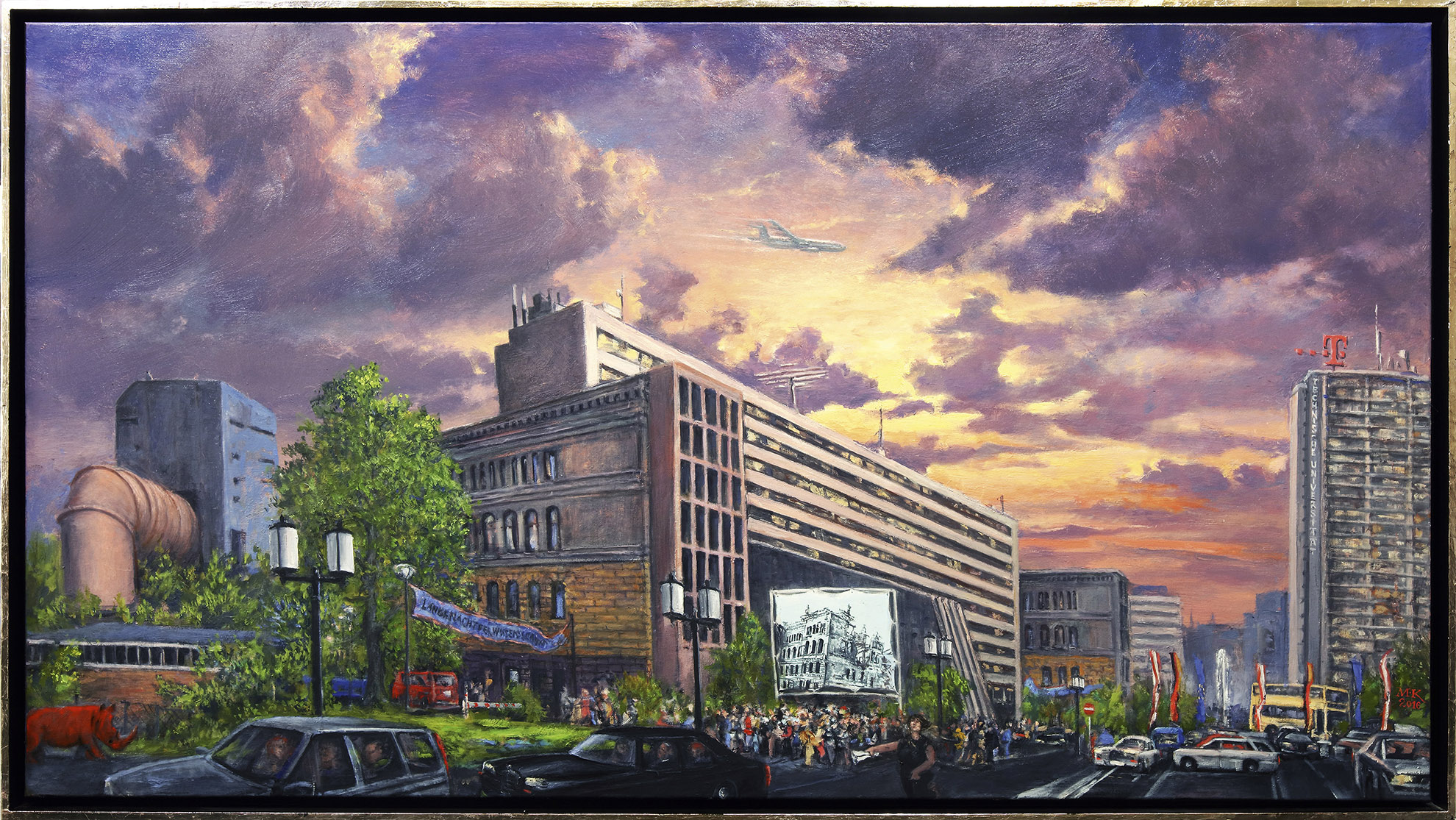
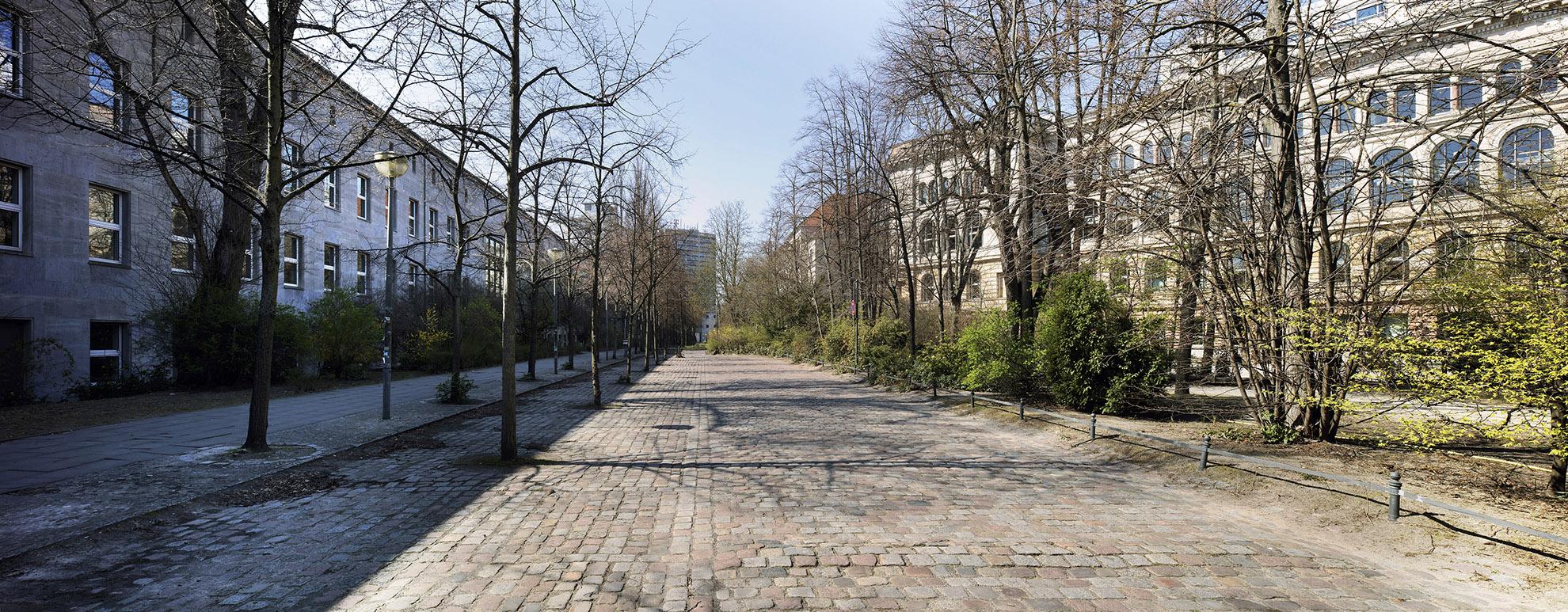
Photo Thomas Spier, apollovision
The Greater Berlin scientific community is famous all over the world and has been since the imperial era. There are four outstanding centres of science scattered in and around Berlin: Friedrich Wilhelm University (now Humboldt University) in the Mitte district, Berlin Technical College (now the Technical University, or TU, of Berlin) in Charlottenburg, the Kaiser Wilhelm Institute (now the Max Planck Institute) in Dahlem and the research facilities at Telegrafenberg (now Albert Einstein Science Park) in Potsdam. TU Berlin facilitated the legendary rise of the New West. When the main building opened in 1884, it was still in a sleepy area on the outskirts of the city. When Greater Berlin was created in 1920, the surrounding area was largely closed and had earned the title ‘Industrial Intelligence Zone’. After the Second World War, TU Berlin experienced tremendous growth, which culminated in the 1968 ideas competition. Fortunately, these plans remained on paper.
Döberitz Military Training Area
The Döberitz military training area west of Spandau is linked to the history of Greater Berlin in a special way. Kaiser Wilhelm II attended the site’s inauguration as a massive military training and parade ground in 1895. Forests and local residents were cleared in order to make way for the training ground. The new Heerstrasse street was opened in 1911 to better connect the area with Berlin. This created one of the main axes of Greater Berlin: the west axis, which began at Berlin City Palace. During the Kapp Putsch of March 1920, the Ehrhardt Freikorps Brigade marched into Berlin from its base in Döberitz. According to contemporary press reports, this event had a greater effect on Berliners than the creation of Greater Berlin. The Döberitz military training area was expanded during the Nazi era and the Olympic village was also established there. The Soviet army took over the site in 1947 and remained until 1992. In the years since then, the area has been used for many different purposes, including by the Federal Defence Forces, but plants, animals and residents have also returned to the site.
Siemensstadt
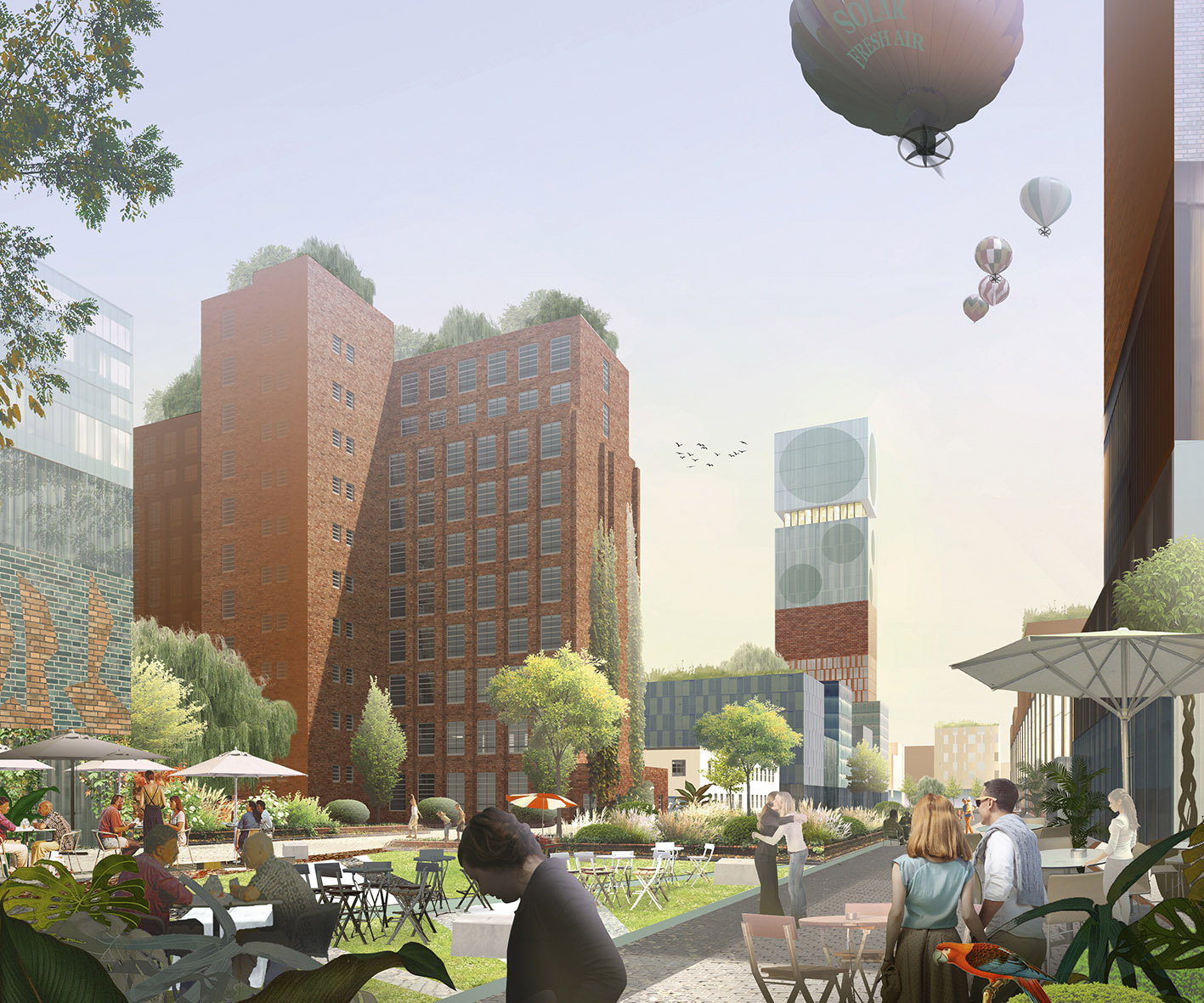
Visualisation from O & O Baukunst
There is hardly any other company that has shaped what was once the largest industrial city in Europe in the way that Siemens has – particularly since the formation of Greater Berlin. Siemens purchased an extensive area on Nonnendamm in 1897, marking the beginning of the story of a unique industrial district: Siemensstadt in Spandau. After the formation of Greater Berlin, architect Hans C. Hertlein led the efforts to considerably expand the Siemensstadt district. At the time, the Siemensstadt housing estate was built based on an urban planning concept designed by Hans Scharoun. The estate is a World Heritage Site today. During the Nazi era, Siemens expanded its production by using forced labourers. The company later moved to Munich because of the Berlin Blockade. The global company is currently planning to build a new Siemensstadt at the old Siemensstadt site. The decommissioned Siemensbahn S-Bahn line is also set to be reactivated.
Healthcare Sites in Buch
The director’s building and staff building of the world famous Kaiser Wilhelm Institute for Brain Research, which was built in Buch between 1929 and 1931. A significant amount of basic research was carried out in the preserved complex of buildings designed by Carl Sattler in the New Objectivity style. A magnificent healing city complete with gardens and sculptures was erected in the northeast of Berlin from 1898 until the First World War. Ludwig Hoffmann, the Berlin director of urban planning and construction from 1896 to 1924, designed plans for sanatoriums for lung diseases, a nursing home, mental asylums, as they were then known, and company buildings. Buch was connected to Berlin via a suburban train station. Buch was further expanded during the Weimar Republic when it became part of Greater Berlin. It later became a site of forced sterilisation and mass murder during the Nazi era. During the German Democratic Republic era, it became a health centre of national importance and other buildings were added to the site, including the Robert Rössle Institute. The Berlin-Buch campus is now once again a major international health centre, not least since the Max Delbrück Center for Molecular Medicine was founded there in 1992.
Tempelhof Airport
Tempelhof Airport was the first major airport in the greater Berlin area. The city’s tumultuous growth displaced the military from the military training area that had been located there and enclosed the massive open space within the Ringbahn circular railway line. The airport opened in 1923. The Berlin Airport Society, founded in 1924, was supported by Prussia, the Reich and Greater Berlin. The airport, which has been accessible by U-Bahn underground line since 1927, quickly became Europe’s most important air hub. The largest building in the world at the time was built there in 1936 according to plans designed by Ernst Sagebiel. The site was used as a huge forced labour camp during the Second World War. The airport became famous across the globe as the centre of the Berlin Airlift of 1948 /1949, which sustained the blockaded West Berlin. Civil aviation resumed in 1951, but was discontinued after Tegel Airport was put into operation in 1975. It restarted again in 1981 and was finally permanently discontinued in 2008 after the city was reunified.
Westhafen Port
One of the most important local economic projects in Greater Berlin opened in 1923: Westhafen port, which was the second largest inland port in Germany for a long time. Berliner Hafen- und Lagerhaus AG (BEHALA) port authority was founded on the initiative of the city and with the participation of the city. The port is connected to the Elbe and the Oder via the Hohenzollern canal, the Berlin-Spandau shipping canal and the West Harbour canal. Construction of the port city began in 1914, but encountered delays and was not completed until 1923. The administration building, crowned with a tower, is the focal point of the entire facility, which was planned by Friedrich Krause, the Berlin head of planning for civil engineering. Many of the buildings from the first phase were designed by architects Richard Wolffenstein and Wilhelm Cremer. In recent decades, Westhafen port has lost its key role as a freight hub in Berlin. The mighty administration and storage buildings still dominate the harbour landscape, serving as a testament to the industrial history of Greater Berlin

Photo Thomas Spier, apollovision
Messe Berlin Exhibition Grounds
The exhibition grounds were also a creation of Greater Berlin. It began at its current location as the first Great German Radio Exhibition in 1924. The radio tower measures close to 150 metres in height and was built according to plans designed by architect Heinrich Straumer. It was put into operation in 1926 for the third Great German Radio Exhibition. It was only possible to implement fragments of the comprehensive design concept for the exhibition grounds that was developed by Hans Poelzig and Martin Wagner in 1929 / 1930. The building exhibition opened in 1931 and was the most important advertising campaign for Berlin’s construction industry. At the same time, it marked the beginning of building exhibitions in Berlin, attracting national attention. After a fire in 1935, work began on the area with the buildings designed by Richard Ermisch and it received its distinctive shape in 1937. The International Congress Centrum (ICC) was added to the site in 1979. The grounds comprise a collection of halls and are crossed by motorways. The inner-city exhibition grounds are a benefit to the city, but its urban beauty is under threat. One of the major tasks of the future will involve comprehensively upgrading the exhibition centre, including finding a new use for the ICC, and redesigning the Westkreuz intersection.
The Hochschulstadt University City Competition

AM TUB, no. 9831
The university city project was one of the Nazi regime’s largest projects in Berlin. Albert Speer, the General Building Inspector for Berlin, acted as the tendering institution. The competition aimed to combine all of Berlin’s universities into a new ‘Reich University of Berlin’, which was to form the ‘representative western entrance gate to the capital of the Reich’. 700 architects from all over the world took part in the competition, but the winners were never announced. The foundations for the military engineering faculty of the Technical University of Berlin were laid shortly before the competition. This marked the first step in the construction of the university city, and indeed, the redesign of the imperial capital in general. Work continued until 1944 and then ceased. After the war, the rubble of buildings destroyed during the war was piled up over 20 years to form Teufelsberg hill, the highest point in Berlin, measuring 114 metres high.
Babelsberg Film Studio
Joseph Goebbels supported plans to create the Film City Babelsberg inspired by the model of the Cinecittà in Rome, which opened in 1937. It was to be the film centre of Europe and would have extended to Drewitz. The project was integrated into the plans of General Building Inspector Albert Speer. Construction began in 1938, but soon stopped. The most striking new building was the presidential building of the German Red Cross. It was a war-related project built between 1938 and 1943. It’s a university building today. The Babelsberg site was transformed into a city of camps during the war. After the war, the striking German Red Cross building was used by the Soviet military administration in Germany and became an elite school for political and legal sciences in 1952 during the German Democratic Republic.
Schönefeld / BER Airport
The new Berlin Brandenburg BER Airport pictured from the southwest in September 2019. Fourteen years passed between the ground-breaking ceremony in September 2006 and the scheduled opening in October 2020. Although it was not part of the original plan, the new Berlin Brandenburg BER Airport will now open on the 100th anniversary of the creation of Greater Berlin. This is a fitting coincidence, as no other urban development project will shift the balance in the city as much as the new major airport. It is already possible to identify a new development corridor in Berlin, which is bringing the eastern Spree area to the fore. This also applies to the state of Brandenburg, which now has a new space in Schönefeld for a boom. Like many other places in the city, the airport reflects Germany’s difficult history in the twentieth century. The airport started out serving the Henschel plant in the service of the Luftwaffe. In 1947, the Soviet military administration ordered the plant airport to be expanded to become the main civil airport in the German Democratic Republic. BER is now set to replace both Schönefeld and Tegel airports.
Tegel Airport
Tegel Airport was built in response to the Soviet blockade of supplies to the western sectors of the city in 1948. The French occupying powers built the airport to relieve Tempelhof Airport during the Berlin Airlift. The Tegel site was used to test airships before the First World War and was later used in rocket testing in 1930. Civil aviation began in 1960. The distinctive airport building was built from 1965 to 1975. It was initially planned to cease flight operations in 2012, but this was delayed by several years. The airport will finally close in 2020, but there will be no farewell celebration due to the coronavirus pandemic. The closure marks the beginning of a new phase. Tegel Projekt GmbH is planning a project that aims to develop a new district with a colourful mix of accommodation, research institutes, institutes of higher education and an industrial park. Beuth University of Applied Sciences is also set to move to the new Tegel site. Tegel’s new ‘Urban Tech Republic’ together with the new Siemensstadt will dramatically change northwest Berlin.
Freight Centres
It is a major challenge to supply a city, and Berlin successfully mastered this challenge 100 years ago, not least with the construction of Westhafen port. Cities cannot survive without trans-shipment hubs to distribute goods. Berlin also relies on Brandenburg to this end. In addition to Westhafen port, which is still important, there are four large freight centres on the outskirts of Berlin that ensure the security of supply: Wustermark (west), Großbeeren (south), Freienbrink (east) and Schönefelder Kreuz. These centres are among the youngest major building blocks of the city. They are used to reload goods between rail and road, and in the best case scenario, from waterways and air travel. Companies from different industries work together at these sites. The centres are not attractive from the outside, but their work processes are fascinating.
EUREF-Campus in Berlin
The EUREF-Campus (European Energy Forum) is also one of Berlin’s younger major projects of national importance. It is the result of a private-sector initiative of architect Reinhard Müller and aims to find solutions for the city of the future and promote the transition to sustainable energy. It demonstrates its solutions extensively on the site. Founded in 2007, the campus is nestled in an older site that had been used for gas supply since 1871. As a result, the main structure on the campus is a gasometer built in 1910. There are also a number of other remarkable restored historical buildings on the site, including some designed by the influential architect Alfred Messel. Numerous companies as well as teaching and research institutes committed to sustainable development operate on the site today, including the Technical University of Berlin. The campus has been the focal point of the State of Berlin’s Smart City strategy since 2017.
Tesla’s Gigafactory
The cleared site of the future Tesla Gigafactory near Grünheide pictured in February 2020. Tesla Gigafactory Berlin-Brandenburg in the market town of Grünheide is a dream project with a lofty name. It is the latest major project that could shape the face of the city. Tesla plans to produce electric cars here by the end of 2021. Planning permission has not yet been granted, but preparatory work has already been carried out. The site itself is striking. Located just behind Erkner and very close to the Freienbrink freight centre, it is visible from the outer Berliner Ring orbital motorway and is in the immediate vicinity of BER Airport. It’s a huge success for the region in the global competition for future technologies! However, the coronavirus pandemic has delayed the project. It was not possible to hold the statutory citizens’ consultation as planned. It is remarkable that all of the public authorities involved are working together to rapidly advance this large industrial project – a good sign.



